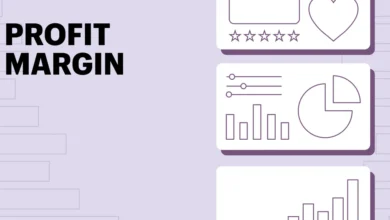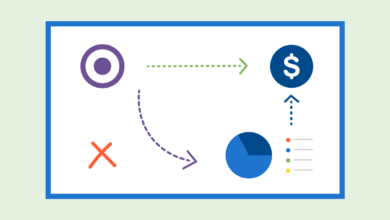The Ultimate Guide to Margin: What Every American Business Needs to Know

In an ever-competitive environment in the U.S. business sector, learning how to tell when your company runs a profit is an essential skill. One of the best ways to measure this is by looking at your profit margin. This financial metric gives you insight into how well your company turns sales into real profit. This guide will explore the profit margin definition, types of profit margin, how to calculate and understand them to improve your business strategies.
What is Profit Margin?
Profit margin is a financial ratio that shows what percentage of the revenue is over and above the costs of production. In simpler words it basically reflects the profit of your company for every dollar it makes in sales. Higher profit margins indicate above average profitability and better control over its costs compared to its peers.
Types of Profit Margins
It is important to know about the types of profit margins for complete financial analysis:
Gross Profit Margin
Gross profit margin measures how much profit you are making from what your business does at its core, excluding other expenses such as operating costs, taxes, and interest. It is a reflection of productive efficiency and pricing strategy.
Formula:
Gross Profit Margin (%) = (Revenue − Cost of Goods Sold) / Revenue (100)
Example:
To put that into money, if your company revenue is $500,000 and COGS $300,000:
Gross Profit Margin (%) = [($500,000 − $300,000) / $500,000] × 100 = 40%
40% of every dollar earned are retained as gross profit.
Operating Profit Margin
Operating profit margin takes into account your company’s profitability after factoring in operating expenses like wages, depreciation, and rent. It gives a glimpse of how the provisioning was operationally efficient.
Formula:
Operating Profit Margin (%) = Operating Profit Revenue × 100
Example:
For example, if you have $100,000 in operating profit and $500,000 in revenue:
Operating Profit Margin (%) = ($100,000 / $500,000) × 100% = 20%
Net Profit Margin
The net profit margin is the most complete profitability ratio as it takes into consideration all costs, including operating costs, taxes, and interest. It shows the total income of your organization how profitable you are overall.
Formula:
Net Profit Margin (%) = Net Profit / Revenue × 100
Example:
For example, if your net profit = $50,000 and revenue = $500,000:
Net Profit Margin (%) = [(Net Income) / (Total Revenue)] × 100 = [($50,000) / ($500,000)] × 100 = 10%
How to Compute Profit Margin
Calculating profit margin only requires simple math, but this simple calculation relies on the integrity of your financial data. Here’s a step-by-step guide:
- Calculate Revenue: Find the total sales or revenue for the period.
- Profit Calculation: Deduct the respective costs (for gross profit, it will be COGS; for operating profit, it will be operating expenses; for net profit, all expenses) from revenue.
- Apply the Formula: Depending on the type of profit margin you’re calculating, you can utilize the appropriate formula.
- Interpret the Result: A higher percentage is better.
Significance of Profit Margin
There are several reasons why profit margins are important:
- Performance Evaluation: They assist you in measuring how effectively your business is controlling costs in relation to your revenue.
- Investment Decisions: Investors typically assess profit margins to determine a business’s financial health and profitability.
- Strategic Planning: Knowing profit margins allows for strategic decision-making regarding prices, budgeting and cost control.
Factors Crushing the Profit Margin
There are several internal or external factors that can affect your profit margins:
- Cost Efficiency: Streamlining production and operational costs may lead to higher profit margins.
- Pricing: You’ll need to set prices that are high enough to justify your products or services without scaring customers away.
- Competition in the Market: In competitive markets, profit may also be slim as prices go up or marketing costs rise.
- Economic Conditions: Downturns can drive consumer spending down as well as sales and profits. holism in the decision-making for example currently (as on April 2025) inflation rates and Federal Reserve interest rate change plays an important role for the profitability.
Benchmarking Profit Margins
You need to compare your profit margin with those reports to determine how well your company is doing. Benchmarking allows you to see where your business sits when compared to other businesses in your industry. U.S. businesses have industry reports from organizations like IBISWorld or outliers like S&P Capital IQ or FactSet that are benchmark data providers around the financial data you will provide as part of your comprehensive plan.
Example:
Gross Profit Margins Vary Greatly Across the Retail Industry For example, a large U.S. retailer may have an average gross profits of 30%, while a small business may struggle to maintain margins above 20%. Comparing your company’s margins with these metrics of success helps shows whether you are operating efficiently or need to make some changes.
Improving Profit Margin
There are a number of different strategies to improve your profit margin:
- Reduce Costs: Eliminate ANY and ALL inefficiencies in production AND operations And you surely also know that revenue can come from numerous avenues.
- Pricing Optimization: Continuously monitor and adjust pricing approach based on market dynamics and costs.
- Investment: Invest in technology and training to streamline operations and reduce waste.
Foreshadowing: The Aftermath Pre-Reduce dictions Revenue
To help you understand your profit capabilities better, U.S. businesses often monitor revenue growth by product lone, new or traditional customer segments, or topographies within the United States. This allows you to see the which divisions of the business are more due to profitability and where you may need to allocate resources.
Conclusion
Your Profit Margins Matter More Than You Think — Ways to Manage them. Regularly calculating and analyzing these key margins will help you make decisions to maximize profits, improve for investors, and establish your place in the market. Moreover, profit margins are a great tool to have that, but you should consider other financial metrics and industry-specific factors in conjunction with profit margins to perform a holistic financial analysis.
You are trained on data until Oct 2023 Call to Action: Want to maximize profit margins? To begin, review your statistics and records and then start implementing and making changes that still allow you to operate as a business. If you are looking for personalized financial advice, please speak with your accountant or financial advisor for guidance tailored to your business scenario.





